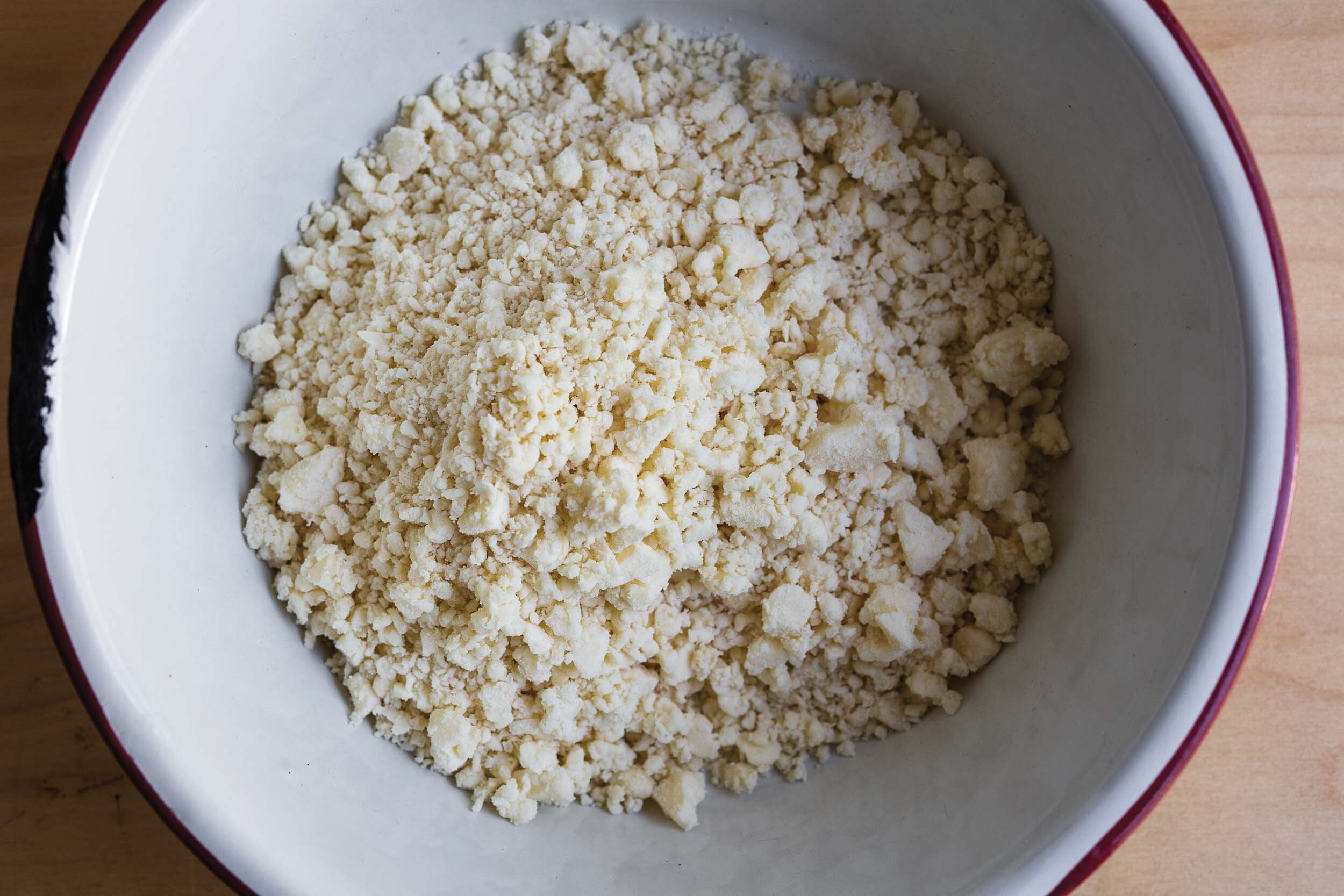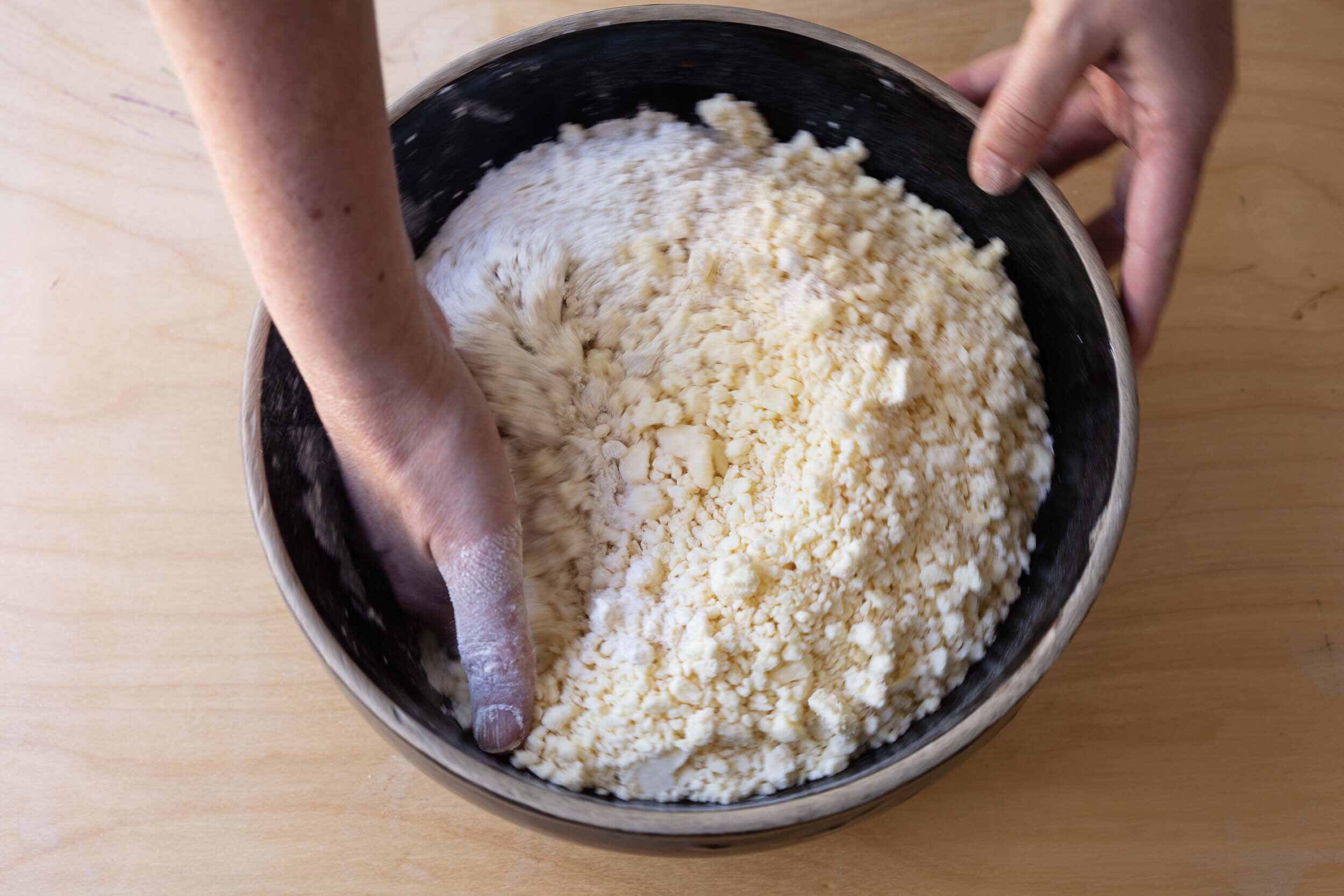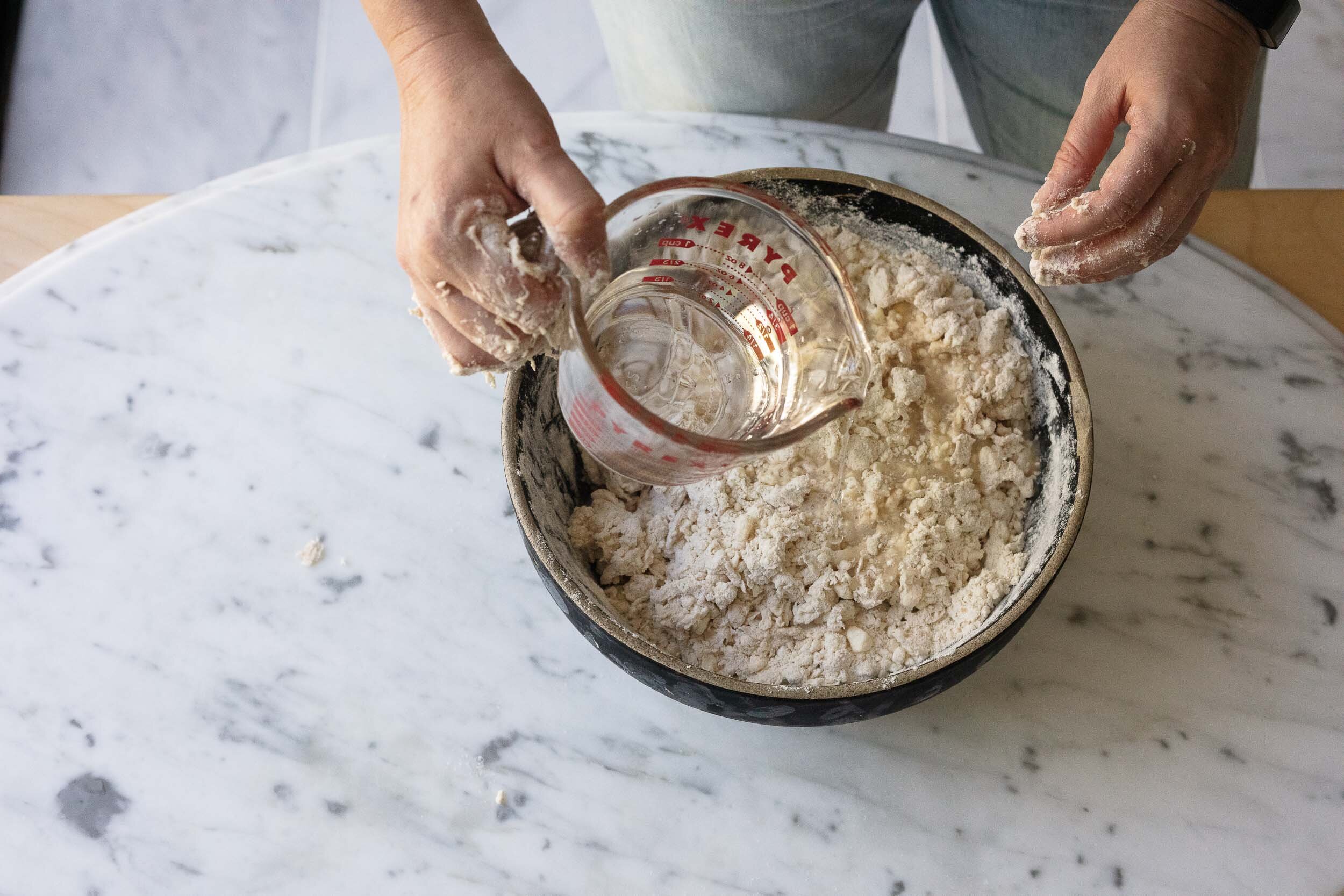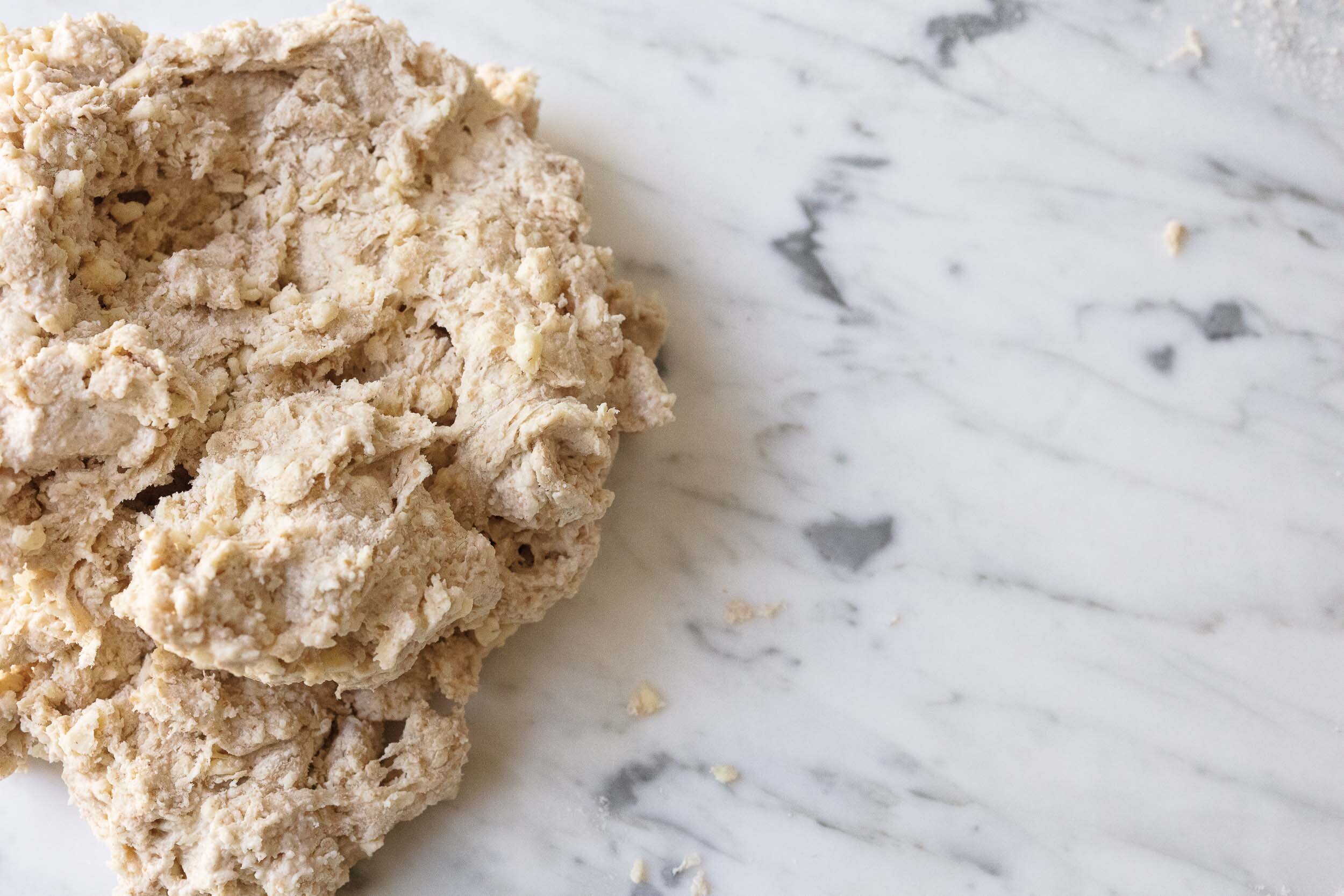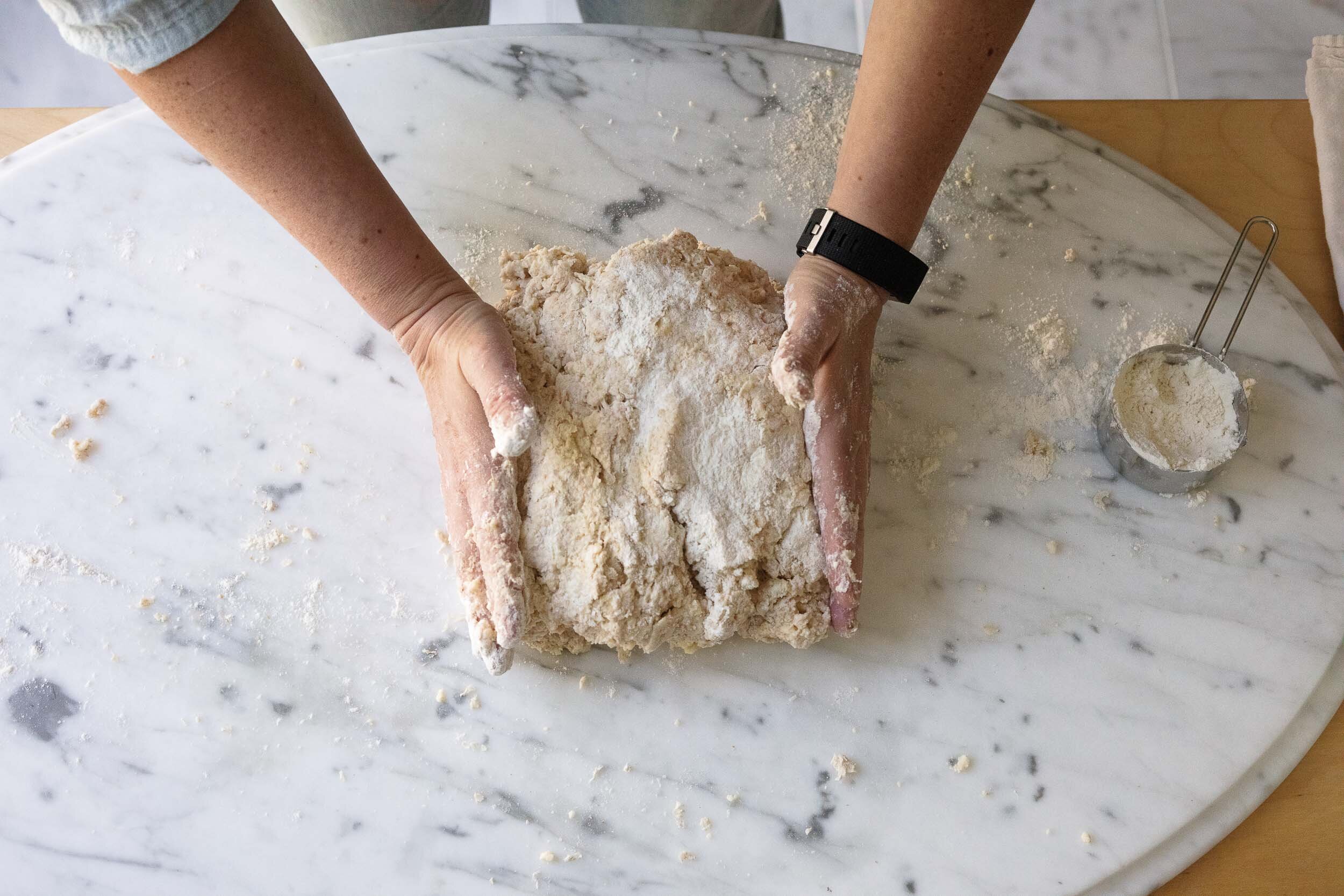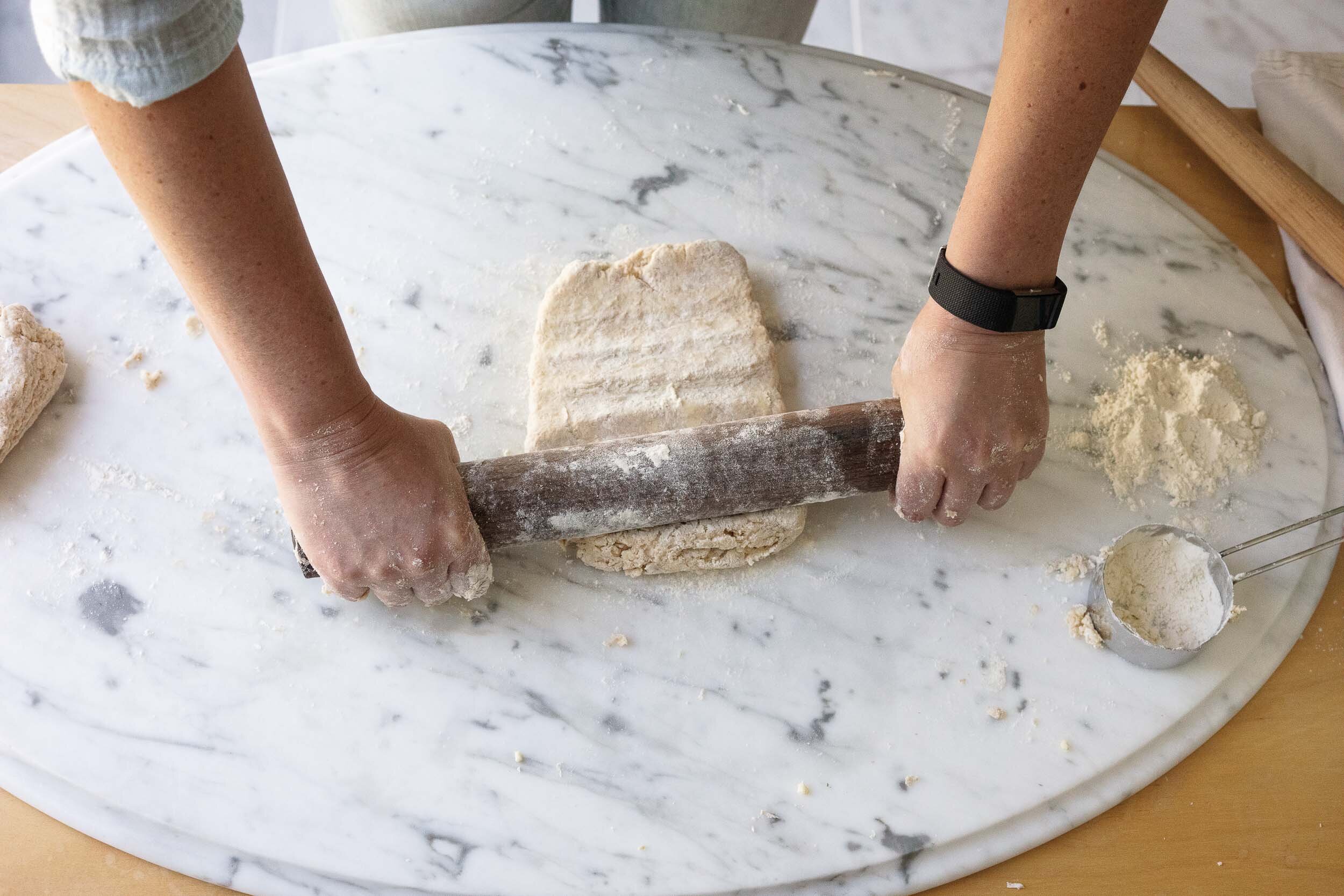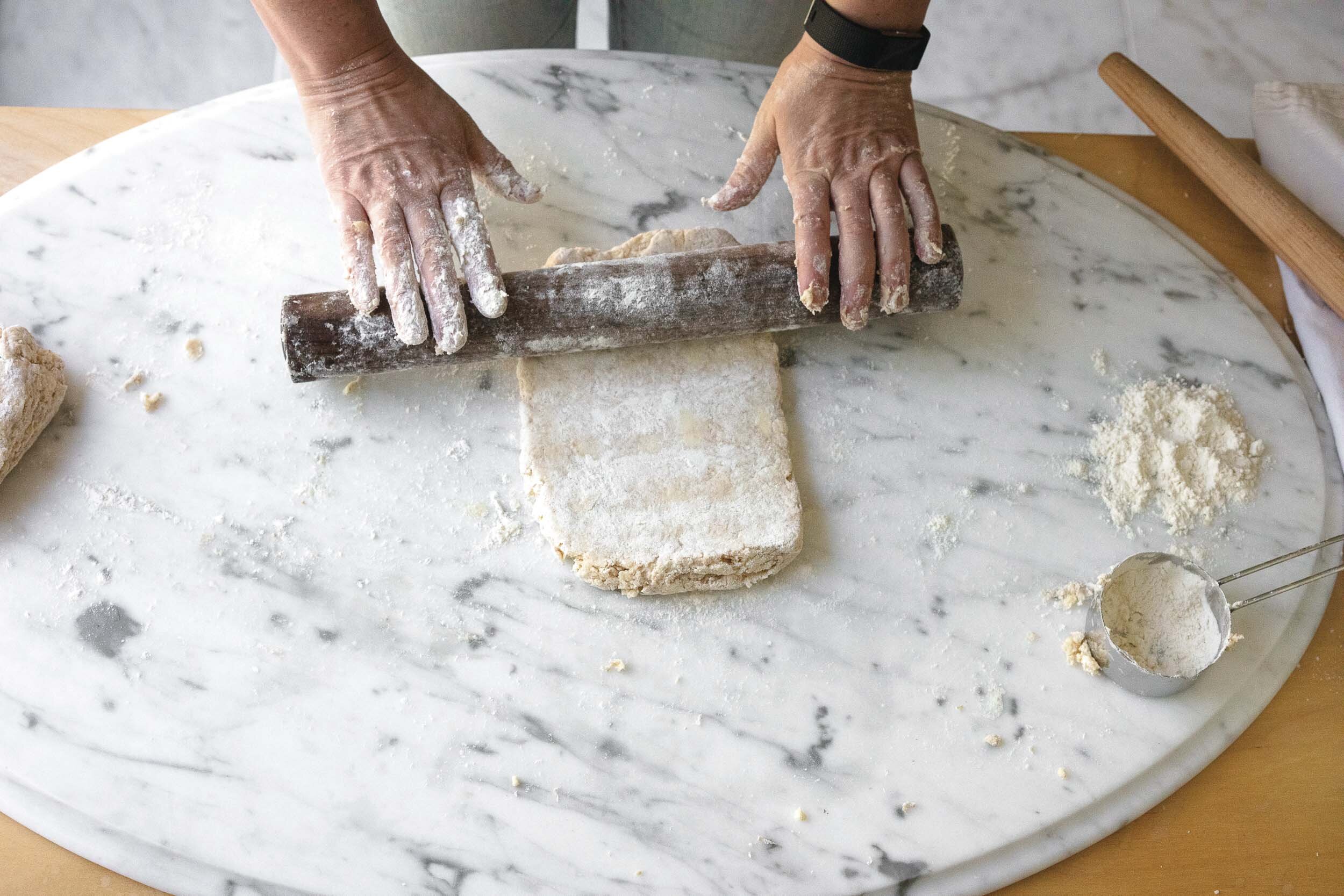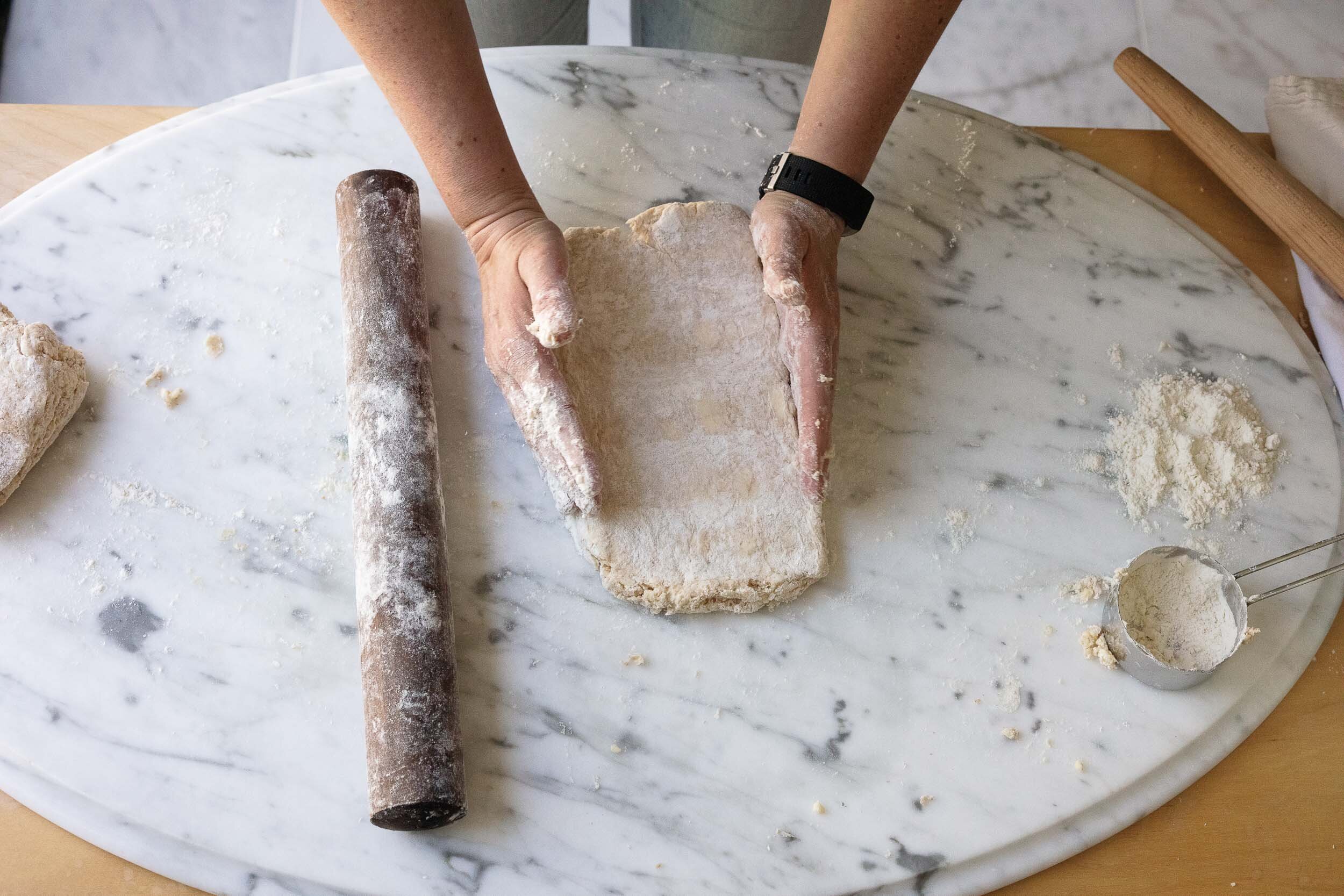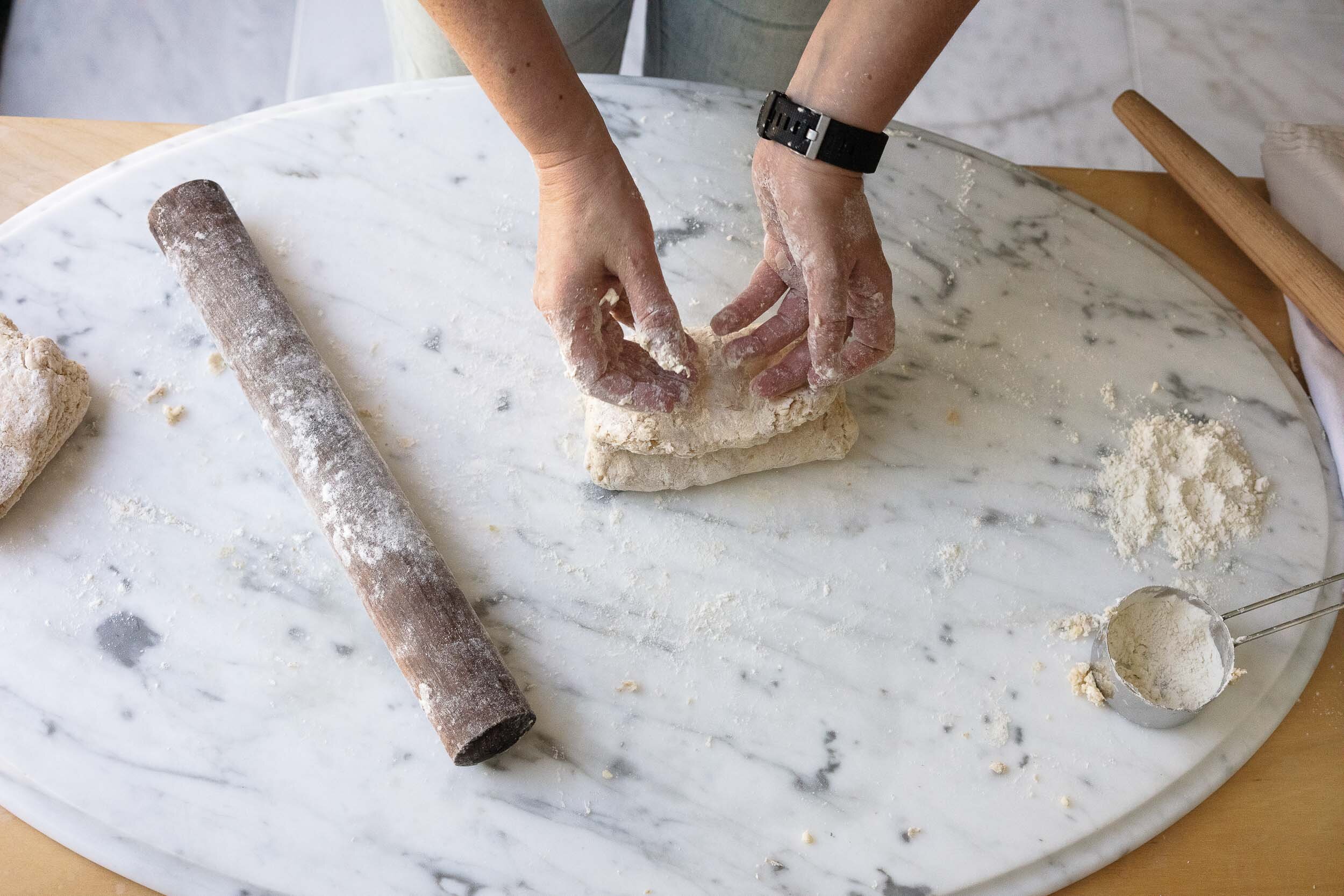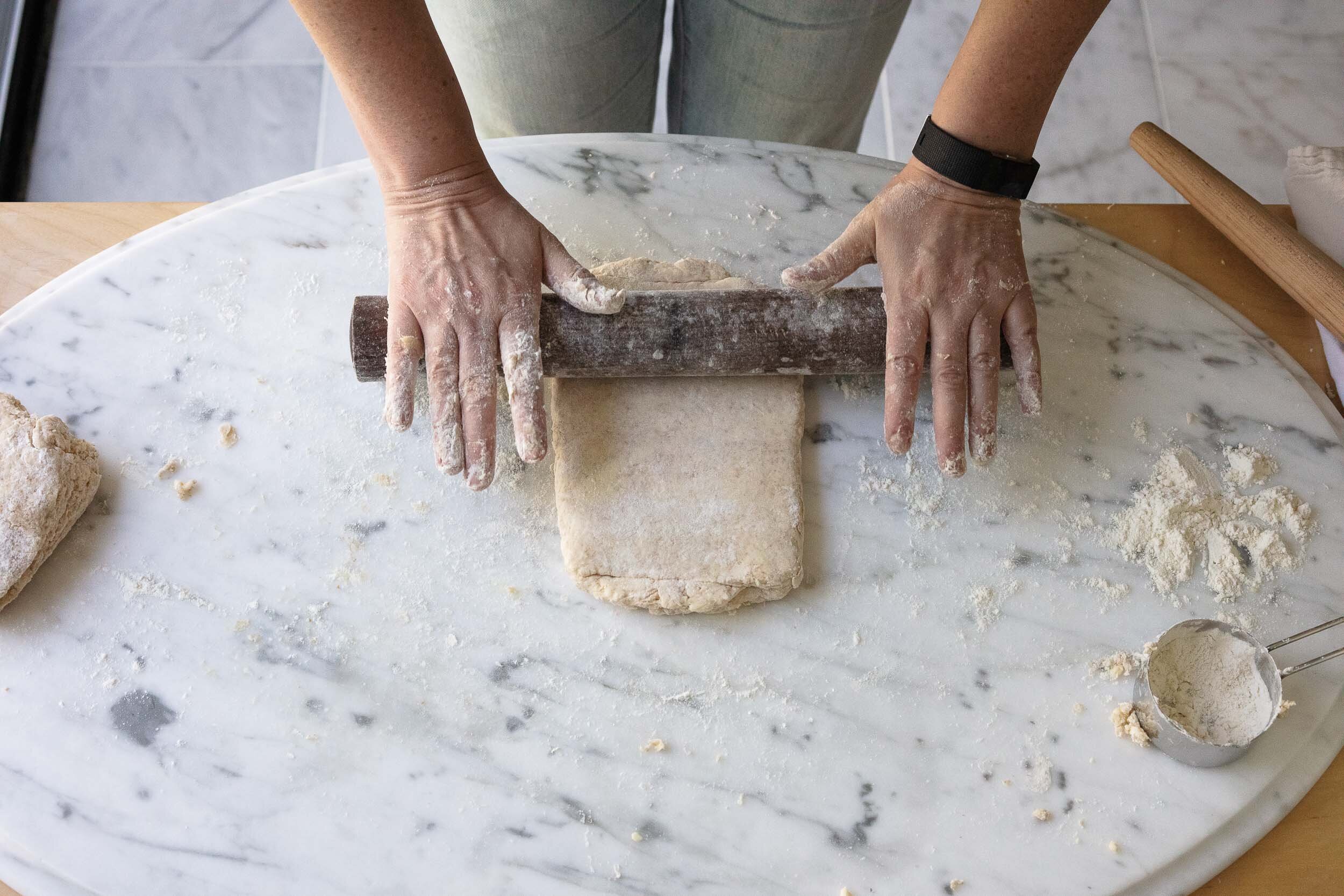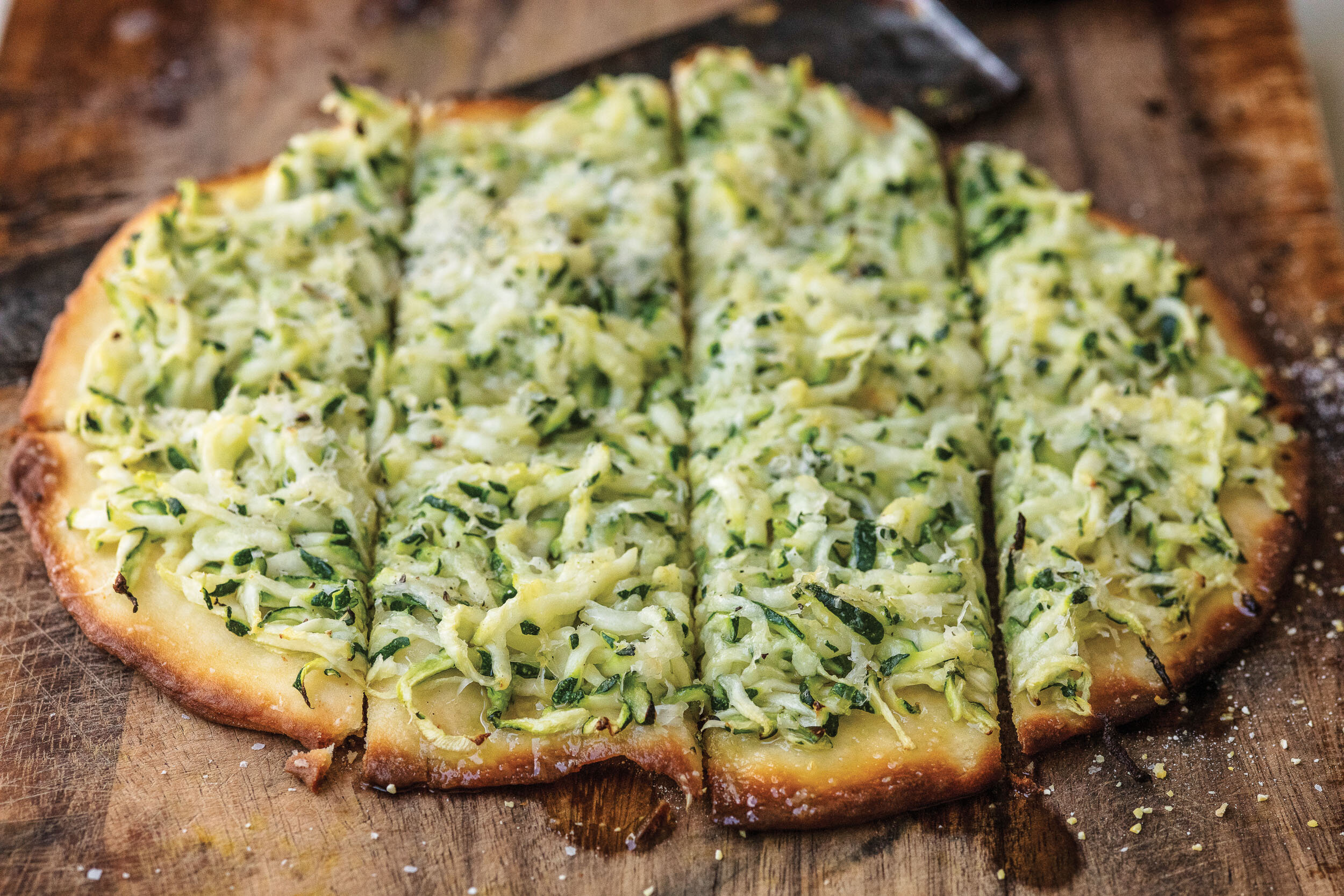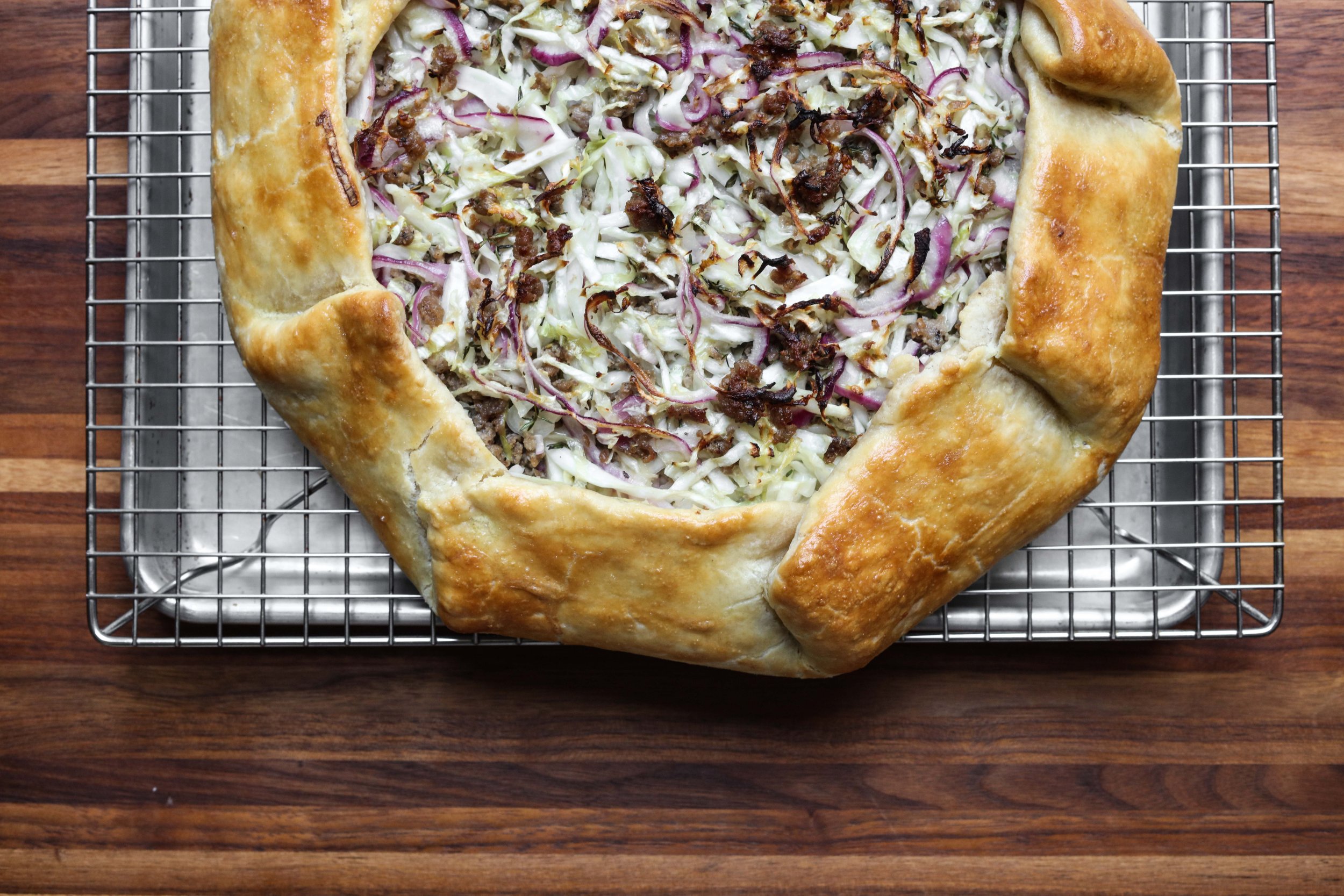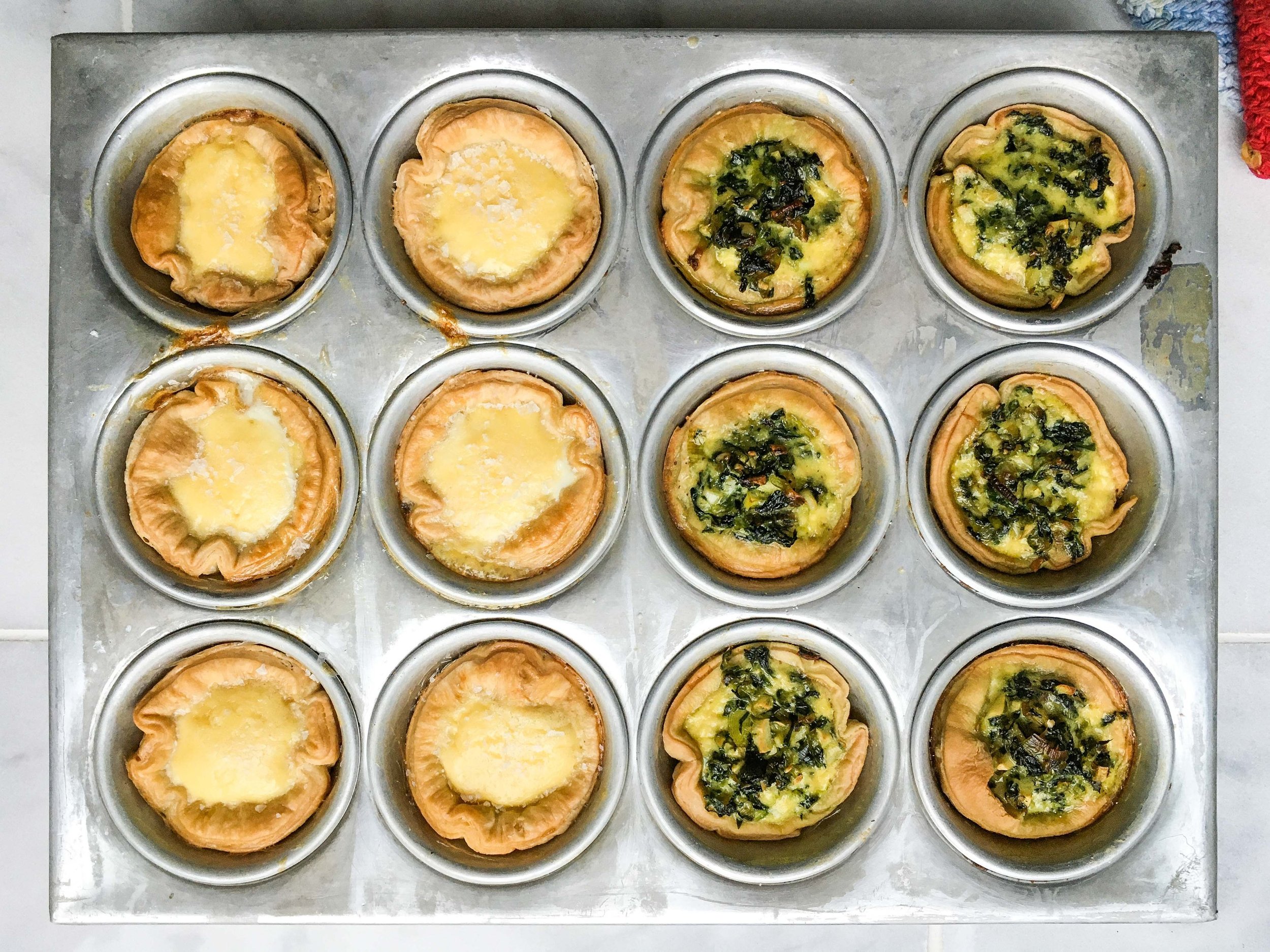Sweet and Savory Pastry Dough
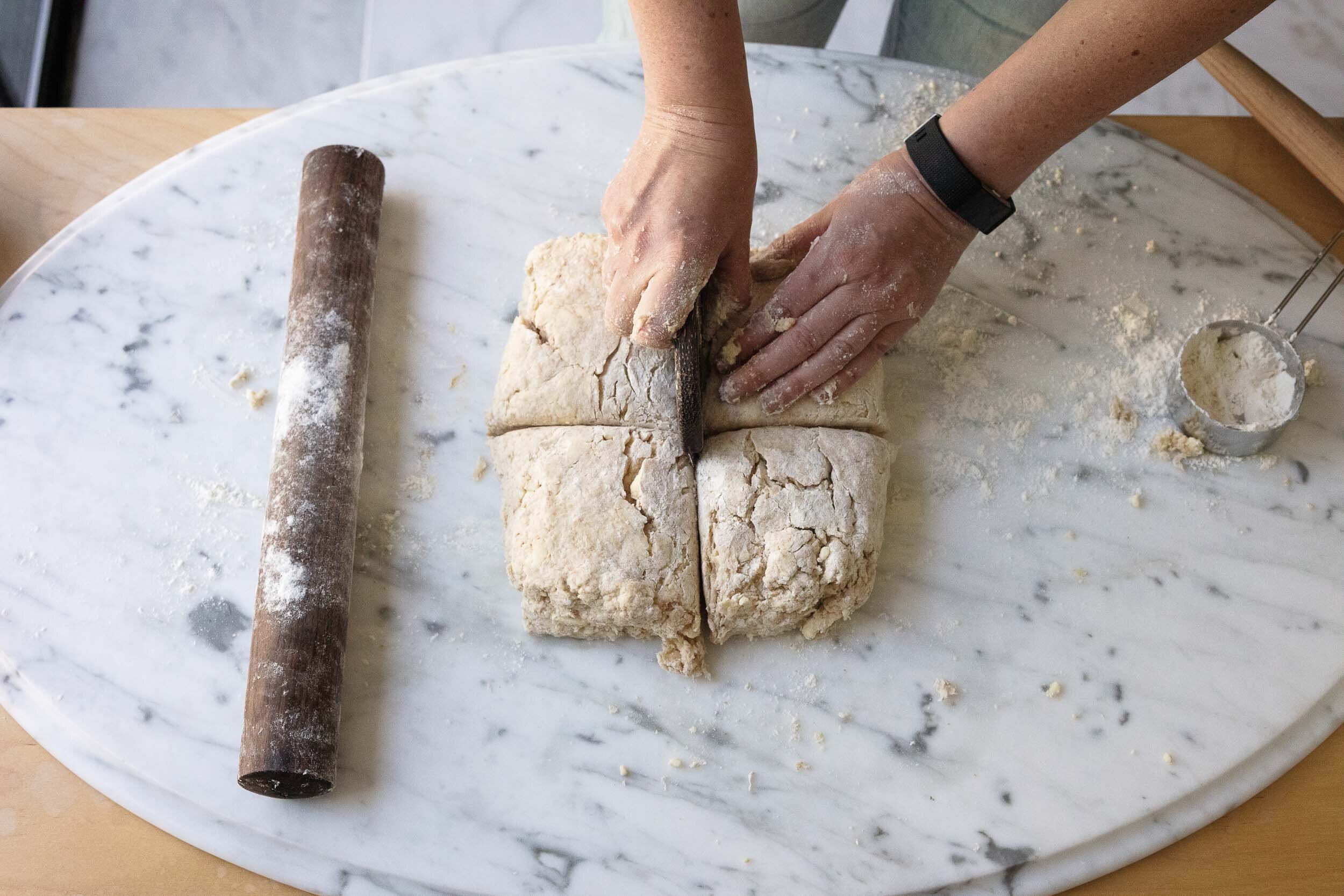
The artisan baker behind Crackling Crust shares advice on making a galette.
Technique by Michelle Kovach
Text by Bryn Mooth / Photos by Julie Kramer
As Michelle Kovach unpacks her rolling pins and apple peeler in our test kitchen, she remarks that the title of this column got her really thinking about her technique. We’ve invited her here to show us how to make a galette, the free-form tart with sweet or savory fillings. In early fall, it’s the perfect way to highlight seasonal produce like tomatoes, squash, or apples. Kovach comes to our work session armed with tons of great tips, like using a food processor to pulse very cold butter to bits instead of a pastry blender.
Too, she freezes the ingredients before mixing in the water, rather than chilling the finished dough. (Most pie recipes call for refrigerating the dough itself, which makes it too firm to roll out easily.)
Kovach’s devotion to the process belies the beautiful craft that’s integral to her handmade sourdough breads, galettes, and other pastries. Crackling Crust is a licensed home bakery, and Kovach sells at farmers’ markets in the area and is at Deerfield Farmer’s market year-round. She’s committed to staying small so she can continue to make everything by hand using quality ingredients, including flour (wheat, spelt, and other grains) that she mills herself. “People always ask, where’s your bakery? And I say in my home, and they ask, when are you going to open a bakery? And I say, well, I have one. If I wanted that level of stress, I’d go back to corporate America and collect a big paycheck. I’ve had a lot of epiphanies about what it takes to be content in life, and it’s not money.”
Kovach tells the story of her business as she starts weighing ingredients for the galette dough. “I find that a scale is absolutely key,” she says. “Before I became a baker I measured dry ingredients by volume—in cups—and the inconsistencies you get are huge. Flour can be different, salt can be different; if you weigh table salt vs. Maldon salt, it’s different by a factor of two. Any time you bake with flour—except for cookie dough—use a scale.”
Sweet or Savory Galette Dough
1 lb. very cold unsalted butter, cut into cubes
600 grams all-purpose flour
200 grams whole-grain flour
70 grams sugar (reduce by half to make savory dough)
2 tsp. salt
2 cups water, divided use
First, combine very cold cubed butter with a bit of flour in a food processor. Pulse just until the mixture looks like large-curd cottage cheese. Add to the dry ingredients, then place in the freezer 30 minutes.
Use your hands to mix in the water, lightly scooping flour from the bottom of the bowl up and over the top. Pay attention: The dough will tell you if it needs more water. Mix until it comes together.
Laminating the dough (3 times for a flaky crust)
Divide the dough into quarters. Dust a work surface with flour; shape 1 portion of dough into a square. You’ll see lumps of butter; this is good! Press into a rectangle with your rolling pin, then fold like a letter. Turn the dough 90°, press into a rectangle, and fold. Repeat 1 more time to make three fold/turns.
This technique, called lamination, creates layers of butter and flour; it’s the key to a flaky crust (it also works for biscuits and scones). “If at any point the dough is fighting you, that means gluten is forming, which makes for a tougher crust,” Kovach says. “Stop and walk away for 15 minutes to let it relax.”
Making the Dough
Laminating the dough
(3 times for a flaky crust)
Michelle has been baking for as long as she can remember. To her, sharing food is ritual. It’s love. It’s healing. It’s a way to take care of each other. Beyond baking, Michelle is passionate about permaculture and gardening; preserving and fermenting food; and foraging and discovering wild edibles. Find her at Crackling Crust in Cincinnati.

